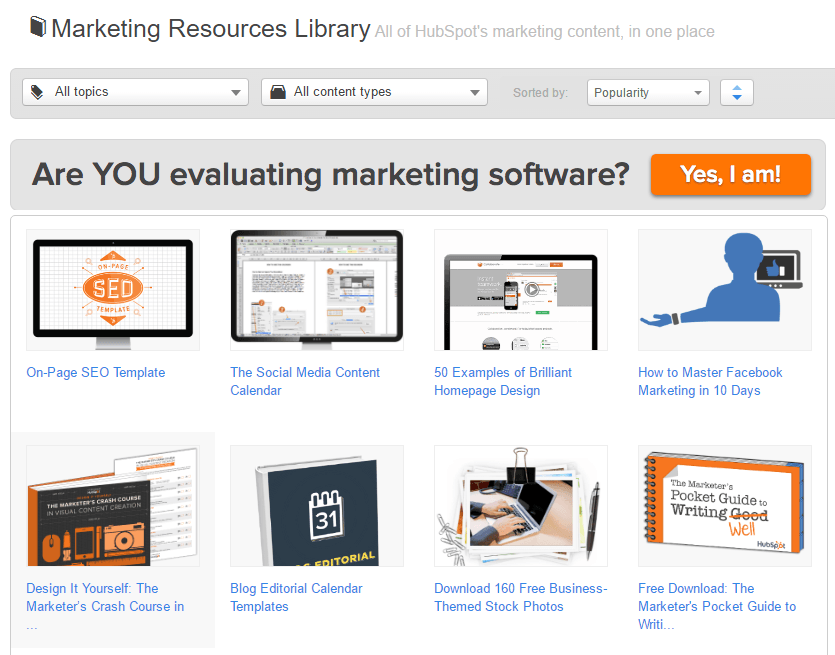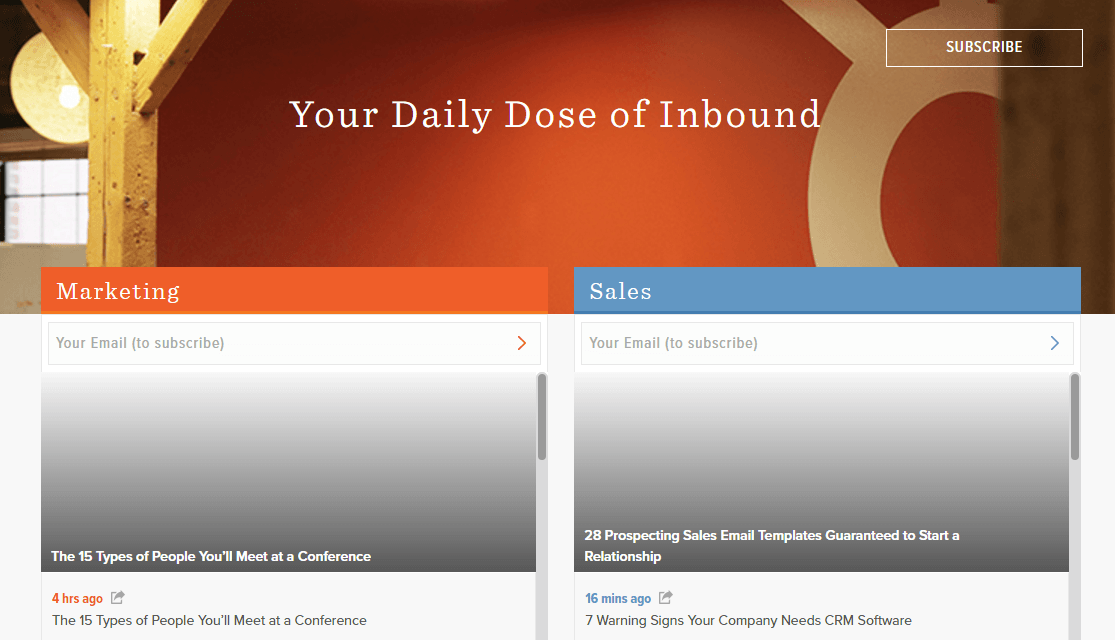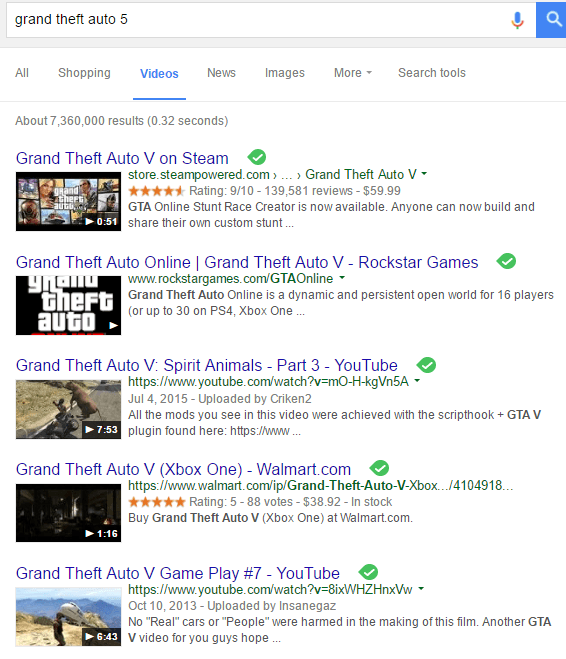-
 11 min. read
11 min. read
-
 Trevin Shirey
Trevin Shirey VP of Marketing
VP of Marketing
- Trevin serves as the VP of Marketing at WebFX. He has worked on over 450 marketing campaigns and has been building websites for over 25 years. His work has been featured by Search Engine Land, USA Today, Fast Company and Inc.
In 2006, Brian Halligan and Dharmesh Shah founded HubSpot. They dedicated their company to inbound marketing and flooded their audience with helpful, high-quality information that taught them everything they needed to know to become clients. On September 17, 2013, video game developer Rockstar Games released Grand Theft Auto V.
The game cost $250 million to make and earned $1 billion within three days of its release thanks to a hype-centric combination of traditional marketing, viral marketing, and paid negative press. Clearly, both HubSpot and Rockstar Games are exceptionally successful in their industries. But they take opposite approaches to marketing their products.
But which one is the “right” way to market? Should your company be helpful like HubSpot or hype-tastic like Rockstar? We won’t straight-up tell you what you should choose because there’s no “right” answer — it depends on your business and goals.
But we can take an in-depth look at both of these examples so you can choose for yourself.
Help-based marketing: Market like HubSpot
 HubSpot erupted into the marketing industry so quickly that it felt like they showed up overnight. Seemingly out of nowhere, high-authority news and marketing sites linked to their huge library of blog posts, infographics, and in-depth guides that made their company so attractive to marketers.
HubSpot erupted into the marketing industry so quickly that it felt like they showed up overnight. Seemingly out of nowhere, high-authority news and marketing sites linked to their huge library of blog posts, infographics, and in-depth guides that made their company so attractive to marketers.
Combined with their proprietary software and their own certification program, HubSpot focused on helping its potential clients by educating them — for free. Today, they’re a heavy contender in marketing software, and their blog features experts from a variety of backgrounds. Altogether, the company brought in $186 million in 2015, and their stock price hovers around $50 at the time of publication.
Not bad for a niche software provider! But the secret to their success isn’t their product — it’s how they promoted their company. With so much helpful information in one place, HubSpot quickly became a go-to resource for questions about Internet marketing.
Their library of guides is colossal, and their full-time team of bloggers pumps out multiple pieces of helpful content each day. Let’s take a look at both to see how HubSpot specifically helps their target audience earn more clients.
Helpful source #1: Downloadable guides
Philosophy: If you teach them, they will pay.
HubSpot’s library is huge.  It has a downloadable guide for just about every topic you could want to learn in marketing, and each guide extensively covers its subject. These guides are the most helpful parts of HubSpot’s site.
It has a downloadable guide for just about every topic you could want to learn in marketing, and each guide extensively covers its subject. These guides are the most helpful parts of HubSpot’s site.
They offer high-quality information from marketing experts for no cost. These guides are split into two different types — on-site and downloads. On-site guides are optimized for search engines to make sure people can find and link to HubSpot easily.
They’re essentially marketing guides that help the company’s marketing campaigns by earning inbound links. Downloadable guides are reserved for the most inclusive and holistic information. These guides don’t have to be optimized for search engines, so the person writing them can focus on the actual content of the guide instead of the keywords that are responsible for earning organic traffic.
These guides are kept behind a gate, so people who want them have to become a new lead before receiving their guide. Both of these guide types have excellent information – because in order for HubSpot to get value from them, they have to have excellent information. The downloads are especially valuable to the company since they generate new leads.
If someone wants to learn more about a marketing topic, then they’re probably a good fit for HubSpot’s marketing software. From there, HubSpot only needs to follow up with their new leads to move them through the sales funnel and turn them into paying customers. Those customers wind up paying $2400, $9600, or $28,800 (plus $600, $3000, or $5000 in fees, respectively) to use HubSpot’s software.
Some of them pay even more because they have more advanced needs. For HubSpot, that means their helpful marketing approach only requires time. It requires a lot of time — someone probably edited and refined each guide several times — but it didn’t take direct money.
So for every lead that HubSpot closes from their helpful information, they get at least a $2400 annual commitment when a client signs up. Most of that has to go back into the company — HubSpot has multiple locations and about 1000 employees. But a decent portion is pure profit.
And because HubSpot’s team keeps growing, they can continue producing these guides day after day to attract even more leads. In a nutshell, HubSpot’s marketing guides are one of the best examples of help-based marketing in the world. Teach people who have the potential to become customers, and they’re much more likely to convert.
Helpful source #2: The blog
Philosophy: Establish authority, stay relevant. Blogs are similar to helpful guides in that they provide high-quality information for free. But the purpose of a blog is different from guides. A blog is designed to provide information that establishes the publisher as an authority while keeping them relevant in their industry.
HubSpot’s writers update their blog so much that the company split their blog in half — one deals with marketing and the other deals with sales.  The job of each blogger is to provide in-depth information on a topic, make an argument as to why it’s right, and direct readers to become new leads. But these leads are also different from the leads generated by guides.
The job of each blogger is to provide in-depth information on a topic, make an argument as to why it’s right, and direct readers to become new leads. But these leads are also different from the leads generated by guides.
Blog leads respond more to newsletters and information updates, as opposed to content that’s designed to get them to convert. So instead of getting an email about how HubSpot’s latest software update can help small businesses, blog leads might get an email with a list of new posts and an option to contact a salesperson directly. The blogs themselves are dedicated to that idea.
Each post has a conversion form at the bottom of the page that only requires an email address, making it easy to subscribe. Once someone is subscribed to the blog, all HubSpot has to do is send them more updates about the blog. Each time they send an email, there’s a small chance that someone will take the next step to converting into a paying customer.
Some of them might even become paying customers on the spot. With that in mind, HubSpot’s blog is another resource based on helpful information that drives cost-effective leads. It’s free to write, edit, and publish each post since it’s on their servers.
It only costs time, just like guides, and it has a huge potential payout. Even if they only get one new customer per week — and they almost definitely get more — this is still one of the most cost-effective forms of marketing. It also happens to be one of the most helpful.
Conclusion: Help-based marketing works
HubSpot’s marketing plan works exceptionally well. The primary investment is time (as opposed to money), and earning a single lead from any content they publish means the content pays for itself and then some. HubSpot has found an incredibly efficient way of providing a quality experience, converting new customers, and successfully growing their business.
But while HubSpot’s help-based marketing works for their subscription product, it’s not the best approach for every company.
Hype-based marketing: Market like (a) Rockstar
 Rockstar Games is one of the most controversial and aptly-named video game developers in the world. They’re famous for their Grand Theft Auto series, which has been entertaining gamers and shocking parents with stories of underground criminals, ultra-violent drug addicts, and consequence-free crime since 1997. Most recently, the studio released their most popular and profitable title to date: Grand Theft Auto V. The title broke several world records when it was released in 2013, including “Fastest entertainment property to gross $1 billion.” (That includes all entertainment media, including film.) The game has also earned about $500 million in microtransactions, so it’s safe to say that it’s earned around $2 billion since its release. For any company, a single product generating $2 billion is almost unbelievable.
Rockstar Games is one of the most controversial and aptly-named video game developers in the world. They’re famous for their Grand Theft Auto series, which has been entertaining gamers and shocking parents with stories of underground criminals, ultra-violent drug addicts, and consequence-free crime since 1997. Most recently, the studio released their most popular and profitable title to date: Grand Theft Auto V. The title broke several world records when it was released in 2013, including “Fastest entertainment property to gross $1 billion.” (That includes all entertainment media, including film.) The game has also earned about $500 million in microtransactions, so it’s safe to say that it’s earned around $2 billion since its release. For any company, a single product generating $2 billion is almost unbelievable.
It’s even more unbelievable that it earned $1 billion in revenue in just three days (another world record). Clearly, Rockstar Games (and the other studios involved) created a wildly successful product. But Rockstar didn’t take the HubSpot approach.
They didn’t create helpful information about how to program games or how to play GTA or anything like that. Instead, they concentrated on hype.
Hype source #1: The news
 It’s no surprise that Grand Theft Auto is one of the most controversial things in modern entertainment.
It’s no surprise that Grand Theft Auto is one of the most controversial things in modern entertainment.
It’s literally named after a felony. So every time there’s a new chapter in the franchise, it catches the media spotlight for a while. Sometimes, that “while” could be years.
That’s what Rockstar wanted to do in 2012 and 2013, just before they published their newest game. Rockstar hired Max Clifford — a controversial PR figure himself — to promote their titles. Clifford responded by planting stories about game’s controversy in tabloids, some of which also made it into mainstream media.
Every story was negative. But when your product is controversial — as marketers learned from Grand Theft Auto — negativity isn’t bad. Public outcry rose in response to the stories, which were then covered more extensively by the media.
That led to more outcry, which led to more coverage, and so on. Clifford created a hype machine that ran itself. But negative press is still press.
And when your game is based on consequence-free crime, all press is good press. So Clifford continued playing up the game’s controversy, which continued generating buzz. By the time the game came out in September 2013, it sold itself.
It continued to sell to the point where it’s the best-selling entertainment product of all time. For GTA, the hype was real — and it paid off in a huge way.
Hype source #2: Video marketing
Video marketing is becoming increasingly popular as more and more companies realize people want to see how their products work and what customers have to say in testimonials.
For Rockstar, video marketing was a no-brainer. They had a top-of-the-line, controversial, and beautifully-designed product that had the attention of the Western World. Plus, video games are one of the most versatile forms of media in the world.
Rockstar could record anything they’d created, publish photos, interview developers, promote its storywriters — all of it was fair game for video marketing.  In this case, video marketing acted as another low-cost, high-yield investment. Even if each video only got 10 future sales, it paid for itself.
In this case, video marketing acted as another low-cost, high-yield investment. Even if each video only got 10 future sales, it paid for itself.
To make sure they got the most out of every video, Rockstar showed the videos at electronics conferences and video game conventions and published them on industry sites, news sites, and YouTube. Millions of people watched, got excited, and talked about the game more. Each video is only a couple minutes long, if that.
But they showed enough of the game’s setting, art style, gameplay, and overall feel that each video became immensely successful. These videos had minimal cost associated with them, too. Rockstar just had to record what they’d already created and splice it together.
It’s a simple concept that they repeated dozens of times, and each time it worked like a charm.
Conclusion: Hype marketing, Rockstar’s billion-dollar success
Rockstar Games embraced the negativity and versatility of their product to promote it at every opportunity. Did it help anyone?
No. But they didn’t need to help anyone. By the time they sold their product, Rockstar had the attention of their primary demographic and then some.
They got in the news, people blogged about them, and they were everywhere on social media. Their game still earns money today, as new players buy the game and current players buy in-game items with real money. The game still gets tons of video attention as well — although now it comes from people recording themselves playing the game.
In that respect, Rockstar hyped up a game so much that it not only earned them billions of dollars, but it also makes money for its players. Yes, sometimes hype can backfire on marketers. But for Rockstar Games, it’s still paying off.
Is your marketing style help or hype?
Is the goal of your marketing team to help your customers or hype your product? Or do you use a little bit of both? In these case studies, the help strategy is better for subscription-based services while hype is better for product sales.
But those rules aren’t set in stone! What strategies does your business use? Let me know in the comments!
-
 Trevin serves as the VP of Marketing at WebFX. He has worked on over 450 marketing campaigns and has been building websites for over 25 years. His work has been featured by Search Engine Land, USA Today, Fast Company and Inc.
Trevin serves as the VP of Marketing at WebFX. He has worked on over 450 marketing campaigns and has been building websites for over 25 years. His work has been featured by Search Engine Land, USA Today, Fast Company and Inc. -

WebFX is a full-service marketing agency with 1,100+ client reviews and a 4.9-star rating on Clutch! Find out how our expert team and revenue-accelerating tech can drive results for you! Learn more
Try our free Marketing Calculator
Craft a tailored online marketing strategy! Utilize our free Internet marketing calculator for a custom plan based on your location, reach, timeframe, and budget.
Plan Your Marketing Budget

Maximize Your Marketing ROI
Claim your free eBook packed with proven strategies to boost your marketing efforts.
Get the GuideTry our free Marketing Calculator
Craft a tailored online marketing strategy! Utilize our free Internet marketing calculator for a custom plan based on your location, reach, timeframe, and budget.
Plan Your Marketing Budget





